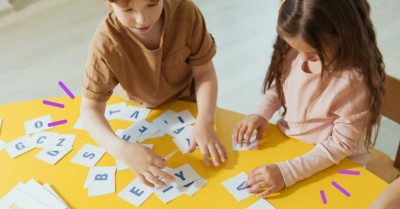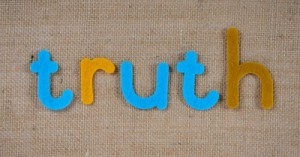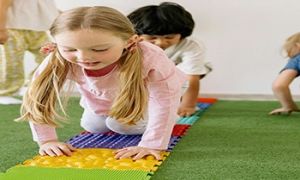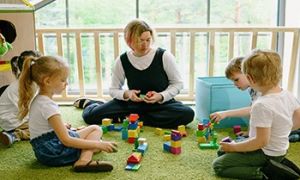At its simplest, communication is the process of sending and receiving information between two or more people. Visual communication involves the exchange of information using pictures, imagery, symbols and signs. The following article provides strategies for using visual communication with children.
Children can communicate by using key images before they begin to speak verbally; for example, by pointing to a picture of eating to indicate they are hungry. This can also be helpful for bilingual children or those from other cultural backgrounds who need extra support to learn English words.
Visual communication aids like labels can be used to teach concepts like the general and the specific or whole and the part. So labels can be used to mark baskets of musical instruments or blocks showing how the flute will go into the first and the Lego bricks into the second. Eventually, learners will know how to read visual signs like a raised index finger for Silence or a swing representing the playground.
Set up a visual schedule to increase task motivation. Put up several stickers or magnets depicting parts of an everyday routine like snacks, singing, naps and so on. As each task or activity is completed, the child can put the sticker or magnets on a schedule panel. Such a visual timetable not only makes it easier for children to remember what they are supposed to do next but also makes it easier for staff to introduce changes in a way that is easy for kids to process.
Visual aids are also great for the teaching process. Pictures of different steps that show children how to do something not just help them learn the skill at their own pace but provide the resources to practise them independently. For example, putting up a visual step-by-step guide of hand-washing above the basin will foster both good hygiene as well as independence in children.
Use large-size picture cards to introduce new vocabulary or practise previously introduced vocabulary. Consider what approach will interest your learner most – using lexical groups like fruits, vehicles, dresses or choosing a theme like a summer and then using picture cards to introduce related ideas and objects like ice cream, swimming, beach ball, the colour blue and so on.
While all early learners benefit from visual cues, this type of communication may be particularly helpful for children with additional needs or the non-verbal learner. Children on the autism spectrum for example find it difficult to process vocal or body language cues. For them and other non-verbal learners, consider using visual cards indicating ‘drink’ or ‘toilet’ so that they have greater agency in their own needs and routine rather than wait to be helped by others.
It was famously claimed by Albert Einstein, "If I can't picture it, I can't understand it." Children's brains process information in ways that we don't always comprehend, just like the mind of that extraordinary man.
And like Einstein, visual communication tools like pictures, signs, charts, and diagrams can be very helpful in fostering good behaviour while enhancing understanding and advancing the development of young learners.
Further Reading
Posters & Charts - Free posters and charts on a variety of topics and themes for children.
Vocabulary Worksheets - Free Vocabulary posters/worksheets for children.
Visual Learning Style In Children - The following provides information on identifying visual child learners, how Educators help visual learners, supporting visual learners and more.
Reference:
Visual Communication For Early Learners, Care For Kids







 As an Educator in Australia, your pay rate falls under the Children’s Services Award 2010. This award states the minimum amount that an employer can
As an Educator in Australia, your pay rate falls under the Children’s Services Award 2010. This award states the minimum amount that an employer can When working as a qualified Early Childhood Teacher (with a university degree) within a service, your rate of pay will come from the Educational Services
When working as a qualified Early Childhood Teacher (with a university degree) within a service, your rate of pay will come from the Educational Services When working as a Diploma Qualified Educator your pay rate is from the Children's Services Award 2010. This Award states your minimum rate of pay
When working as a Diploma Qualified Educator your pay rate is from the Children's Services Award 2010. This Award states your minimum rate of pay When working as a Cert 3 Qualified Educator, your pay rate is from the Children's Services Award 2010. This Award states your minimum rate of
When working as a Cert 3 Qualified Educator, your pay rate is from the Children's Services Award 2010. This Award states your minimum rate of Educational Leaders play a crucial role in their early childhood service by ensuring that the educational program aligns with best practices and supports the holistic
Educational Leaders play a crucial role in their early childhood service by ensuring that the educational program aligns with best practices and supports the holistic In early childhood education and care, ratios are more than a technicality—they are a frontline safeguard. Every child deserves responsive supervision, emotional connection, and developmental
In early childhood education and care, ratios are more than a technicality—they are a frontline safeguard. Every child deserves responsive supervision, emotional connection, and developmental With the new national child safety reforms kicking in on 1 September 2025, early childhood services like yours have a real opportunity to lead the
With the new national child safety reforms kicking in on 1 September 2025, early childhood services like yours have a real opportunity to lead the Here’s a comprehensive Mobile Phone and Smart Watch Policy tailored for early childhood education and care (ECEC) services in Australia, aligned with the latest 2025
Here’s a comprehensive Mobile Phone and Smart Watch Policy tailored for early childhood education and care (ECEC) services in Australia, aligned with the latest 2025 The Sea of Fish Challenge is a national initiative that invites children, educators, families, and communities to create and display fish artworks as a symbol
The Sea of Fish Challenge is a national initiative that invites children, educators, families, and communities to create and display fish artworks as a symbol Across the early childhood education and care sector, educators are sounding the alarm: current staffing ratios are insufficient to deliver safe, meaningful, and developmentally appropriate
Across the early childhood education and care sector, educators are sounding the alarm: current staffing ratios are insufficient to deliver safe, meaningful, and developmentally appropriate


